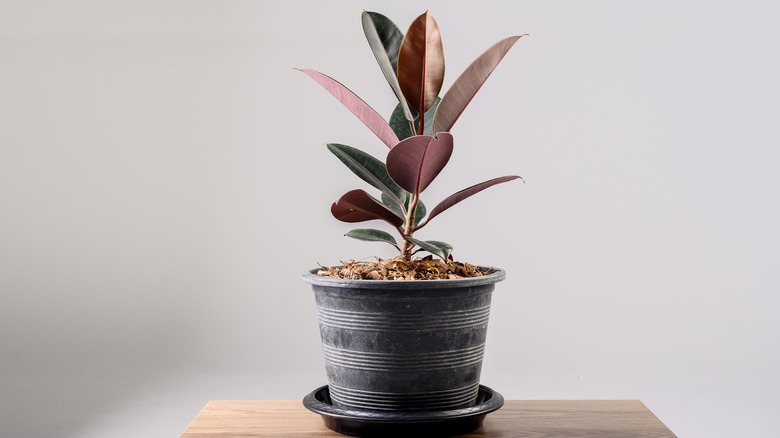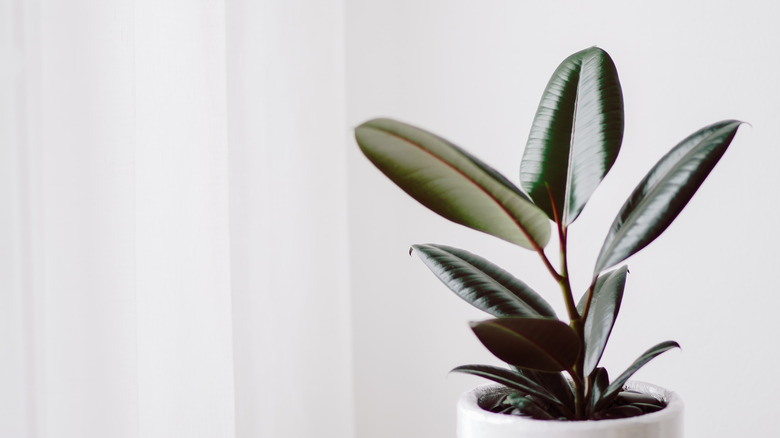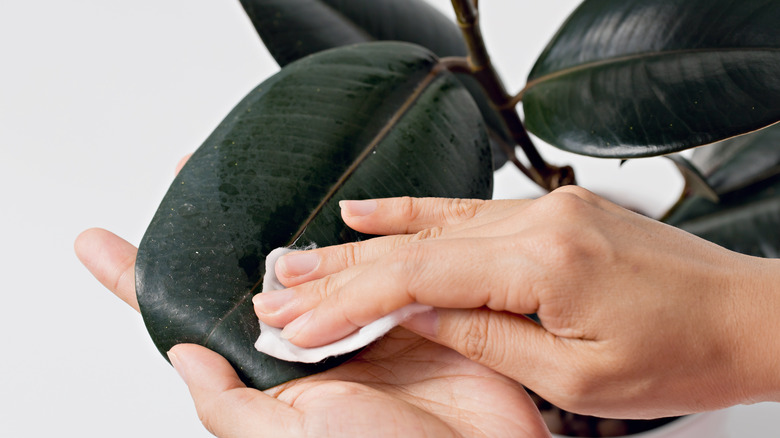The Burgundy Rubber Tree Dethroned The Monstera As The Trendiest Houseplant
Many homeowners love to infuse their homes with a calming aesthetic, so it's no wonder that houseplants and natural themes have become widespread in interior design. With Americans spending most of their time inside, inviting a piece of mother earth into our homes is healing for the soul. Plants not only beautify our spaces but have also been determined to improve air quality, support cognitive health, and reduce stress.
Monstera plants have long dominated lists of popular houseplants, and it's easy to see why. They are easy to care for, so even beginners can enjoy their large, green leaves and calming presence. Also, their funky shape and rapid growth attract anyone and everyone looking to spice up their style. However, a new houseplant has transcended its spot on the charts, shaking up homes with its dramatic maroon foliage. Thankfully, the burgundy rubber tree is similar to the monstera in its rapid growth, simple needs, and resilience to neglect. According to Dr. Bill Wolverton, a scientist specializing in environmental engineering, the rubber tree ranks as one of the most effective at cleaning the air and has a high resistance to pests (via Our House Plants). These plants were popular in the past — so much so that they became hard to find and went out of style. Now, these gorgeous merlot leaves are making a significant comeback.
About the burgundy rubber tree
The burgundy rubber tree, also known as an India rubber plant or a Ficus Elastic Burgundy, allures many with its dark, glossy leaves and unique purplish red hue. The tree earned its name from its deep crimson foliage and because it produces a sap that can be used to make low-grade rubber. Part of the Moraceae family, the burgundy rubber tree is native to the Himalayas in Malaysia, Sumatra, and Java. It can grow between 50 to 100 feet long in its natural habitat. However, you can expect to see a size of 4 to 6 feet indoors, with leaves growing around 12 inches long and 5 inches wide.
When paired with a raised pot, these plants make the perfect addition to an empty corner, but smaller ones are wonderful centerpieces or accents. Whether placed in a spot with a lighter palette or saturated hues, this unique plant is definitely eye-catching. While the burgundy rubber tree is one of the more popular varieties among its species, other cultivars are also capable of drawing the eye. For instance, the robusta stands out for its leathery green leaves; the tricolor flaunts shades of pink, green, and white; and the tineke produces different shades of greens with hints of cream.
Caring for your burgundy rubber tree
The burgundy rubber tree is known to be relatively easy to care for and can thrive in most indoor environments. The houseplant enjoys humid areas, so misting its leaves or investing in a humidifier benefits its health. Bright indirect sunlight suits the tree best; however, keeping it out of low light is essential. While too much direct sunlight can scorch the leaves, too little light will quickly cause them to droop and lose the purple pigment it's known for. During colder months, you'll want to keep it a reasonable distance from windows and doors as it does not like cold drafts. And, because this plant doesn't do well with lots of movement, it's best to find a place for it to rest year-round.
You'll only want to give it a good watering when at least 50% of the soil's top portion is dry, which will become less frequent as winter approaches. A well-draining pot and aerated soil are essential for avoiding root rot. Soil mixes that include pine bark, perlite, and sand work wonders for creating adequate soil aeration. Prune any straggling growth as needed, but be careful of the sap. It is toxic to both pets and humans, so wearing gloves is a wise idea when trimming your burgundy tree.


